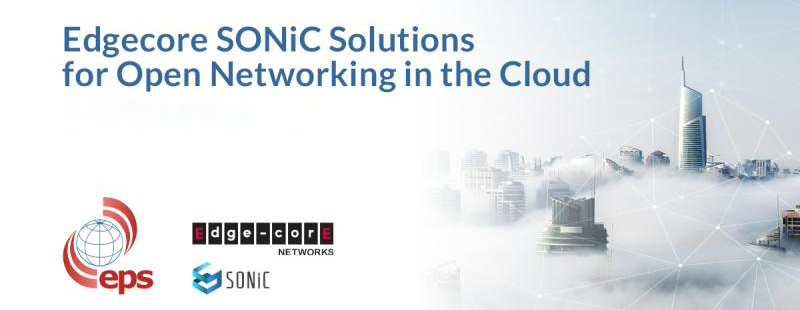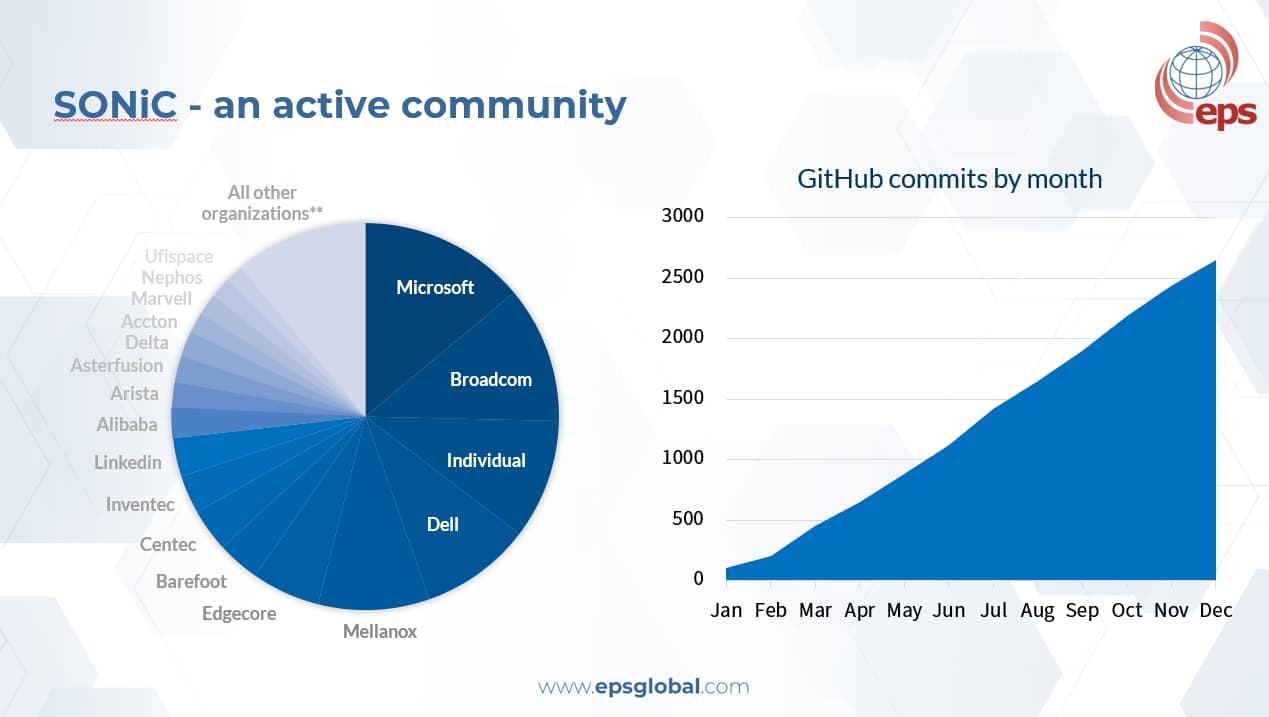
This article is an excerpt of the expert panel discussion during our webinar with Edgecore Networks and the Open Compute Project (OCP): Edgecore SONiC Solutions for Open Networking in the Cloud. You can watch the full webinar here.
SONiC has been production-hardened in the data centers of some of the largest cloud-service providers, allowing them to share the same software stack across hardware from different switch vendors, but is now being widely adopted outside of the hyper-scale data center environment due to the ever-increasing feature set. Developed by Microsoft and gifted to the Open Compute Project (OCP), it also offers stability in the dynamic landscape of open software vendors.
Our panel of industry experts take a refreshing look at the state of the industry and where SONiC fits in, its origins, Use Cases and why the market needs it...
Use cases include:
- Scalable L3 Fabric Underlay
- Network Fabric Underlay for VMWare® deployments (NSX, ESX, vSAN)
- Multi-tenancy with VxLAN & eVPN
Our panellists:

Barry McGinley [BMG]
EPS Global

Mike Ward [MW]
Edgecore Networks

Steve Helvie [SH]
OCP
Topics Covered
- The State of Open Networking 2020 - 2021
- Origins of SONiC & why the market needs it
- Edgecore SONiC Solutions overview
- Use Cases: Where SONiC fits, and where it doesn’t!
- Leveraging the OCP Ecosystem to engineer a higher performance, cost-effective network
View the full webinar here or read on to see some of the questions asked of our panel:
Is DENT the Linux version of SONiC, if so does Edgecore support that production integration?
[MW]: I don't know if I would see DENT as the Linux version of SONiC, as SONiC runs on Linux as well. DENT is fundamentally focused on a different market space than SONiC, the enterprise domain*, and it has a different architecture. From the Edgecore perspective we do have devices that support DENT and are available today, however, at this time, we do not offer a production or a commercial support offering around DENT, we are still pretty early in the DENT lifecycle. The first version of the DENT software was released about 6 weeks ago (December 2020). It is something you can go download from the DENT website and load and run on the targeted Edgecore platforms. We will be monitoring and very actively participating in that community as it moves forward. I certainly see both SONiC and DENT as having their use cases and applications in the network.
* [BMG]: DENT is initially focused on retail, and the thought is that they are looking at reducing hardware costs within their stores like Amazon Go. In December just gone the project had its first code release which they named Arthur, after Arthur Dent from The Hitchhikers Guide to the Galaxy.
I know SONiC is used by the large hyperscalers, but is it something a regular enterprise can adopt?
[BMG]: We have about 4-5 proof of concepts underway with customers, but it goes back to what I was saying earlier in the webinar about critical mass. Like every enquiry we get for a NOS (Network Operating System), we have to validate whether it'll work or not for a customer’s particular business needs and in their production environment, but the same is true for any NOS, Pluribus, Cumulus, IP Infusion etc. So yes, we are there, enterprises are adopting SONiC and we are seeing this through the interest in PoCs at the moment.
[SH]: I would just add - if you look at the contributors to SONiC (list of which is available on the OCP’s website here), you'll get a good sense of the variety of enterprises that are adopting it. There are some pretty interesting enterprises that are contributing quite a bit to SONiC, and are going to continue to be pretty active. The OCP hosts SONiC subproject group calls every other week, so you know that they're working hard… if it's not 100% enterprise-ready now, it is moving very rapidly in that direction.

**These organizations include: Airbnb, Apstra, Aviz, Baidu, Cavium, Cisco, Criteo, DidiChuXing, Ingrasys, Innovium, Juniper Networks, Mediatek, NTT, Pegatron Corp., Quanta, Red Hat, Ruijie, Tencent, University, UST
How does the distribution available from Edgecore differ from what can be downloaded from the community hub?
[MW]: Edgecore Networks offers commercial support and solutions for a qualified enterprise SONiC distribution on our switch platforms, and fundamentally our drive is to keep the Edgecore distribution very closely in sync with the community distribution. As mentioned earlier in the webinar, there is the hardening that goes on in production environments, and other changes that might occur such as bug fixes that may have been identified during our testing process; and some additional features that are provided. But ultimately these changes are directed towards the community-based version.
I like to think of the Edgecore distribution as a production-ready preview of what is to come in the community. There's a commitment from us that 100% of the enhancements we are making on the distribution version goes back to the community. What none of us control directly is how quickly those changes may get applied. Customers that make the investment around changes on our distribution can certainly have confidence that there is alignment with what's happening on the community side as well.
[BMG] I think it’s important to have one person to roar at! You need to be able to pick up the phone to somebody to get support, so using Edgecore for the hardware and the software makes sense.
Where do you see SONiC going in the next year or two?
[BMG]: Taking a macro view, I know Microsoft have big plans, they are looking at load balancing; they're looking at managing it with Kubernetes; they're looking at moving out to the edge. And from what we’re seeing in the market right now, EPS’s point of view, obviously we have to roll out these deployments that I have mentioned. It will be important to get these proof of concepts I'm involved with up and running, and to have these success stories to share with smaller enterprises. The larger organizations have multiple engineers to help work on this stuff so it is less daunting, but to be able to reassure smaller companies that SONiC deployments will and have worked in similarly small-sized implementations. If we can see it working there, SONiC will be a success in Data Centers and enterprises of all sizes.
[MW]: Where we see traction at the moment is customers who have use cases that are aligned to where the core SONiC use cases lie. The BGP Fabric underlays, or expanding that into multi-tenancy. But where is it going to go? We talk to customers daily that want to pull SONiC into every different direction! From Telco; Service Provider; to Enterprise; to Access; you name it. It's really going to come down to what the community does and those that get active and involved in the SONiC community, and what they contribute into that domain. It's sort of a natural evolution for SONiC to sort of trickle its way down from the date as I mentioned earlier, from the from the larger scale Data Centers and the Enterprise Data Centers, and work its way down the stack towards the Access space, and into a sort of peering role in other segments of Telco and so forth.
You can view the full webinar here now.